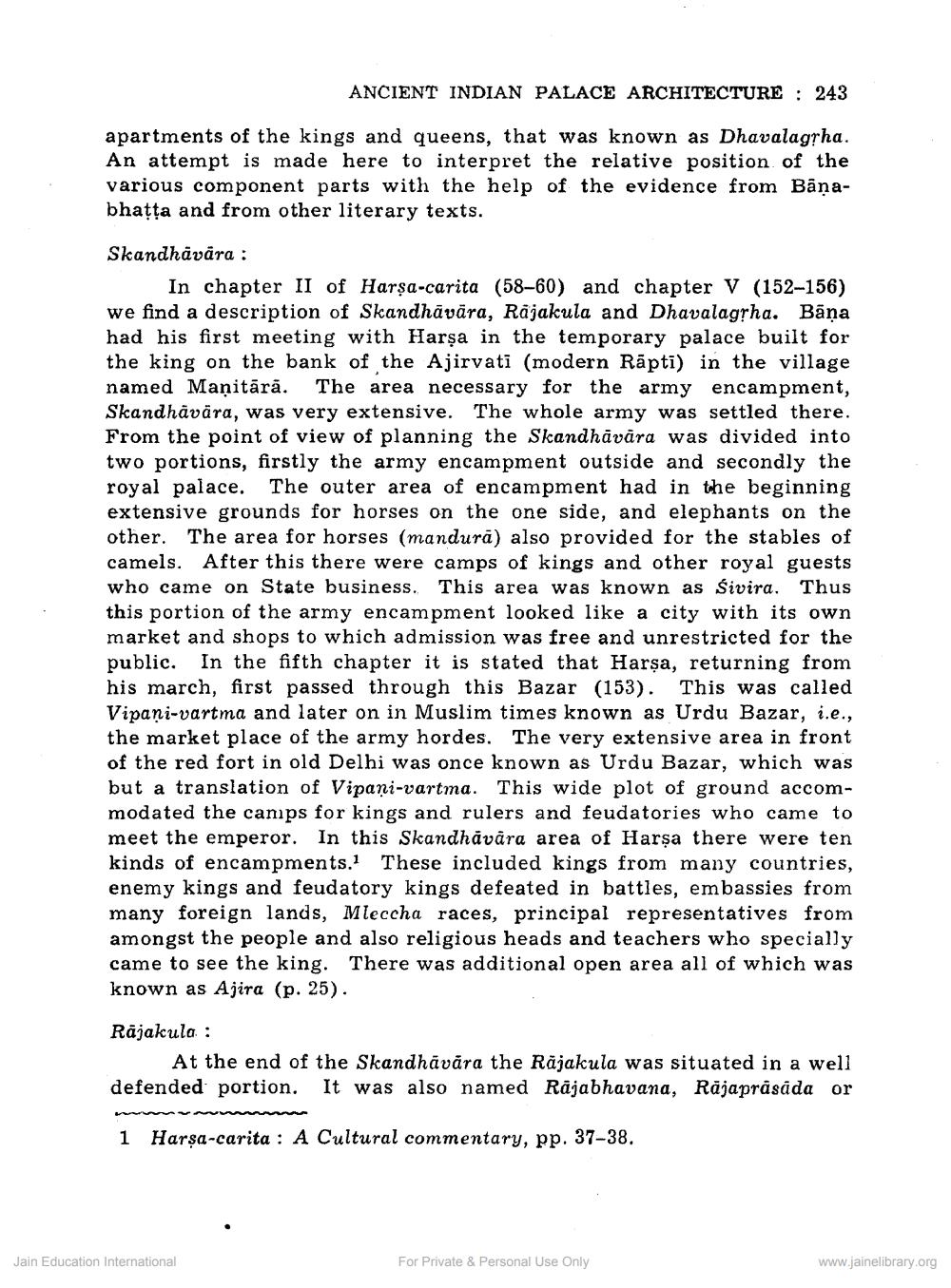Book Title: Ancient Indian Palace Architecture Author(s): V S Agarwala Publisher: Z_Mahavir_Jain_Vidyalay_Suvarna_Mahotsav_Granth_Part_1_012002.pdf and Mahavir_Jain_Vidyalay_Suvarna_ View full book textPage 2
________________ ANCIENT INDIAN PALACE ARCHITECTURE : 243 apartments of the kings and queens, that was known as DhavalagȚha. An attempt is made here to interpret the relative position of the various component parts with the help of the evidence from Bāņabhatta and from other literary texts. Skandhavara : In chapter II of Harşa-carita (58-60) and chapter V (152-156) we find a description of Skandhāvāra, Rajakula and Dhavalagrha. Bāņa had his first meeting with Harsa in the temporary palace built for the king on the bank of the Ajirvati (modern Rāpti) in the village named Manitārā. The area necessary for the army encampment, Skandhävāra, was very extensive. The whole army was settled there. From the point of view of planning the Skandhāvāra was divided into two portions, firstly the army encampment outside and secondly the royal palace. The outer area of encampment had in the beginning extensive grounds for horses on the one side, and elephants on the other. The area for horses (mandurā) also provided for the stables of camels. After this there were camps of kings and other royal guests who came on State business. This area was known as Sivira. Thus this portion of the army encampment looked like a city with its own market and shops to which admission was free and unrestricted for the public. In the fifth chapter it is stated that Harsa, returning from his march, first passed through this Bazar (153). This was called Vipani-vartma and later on in Muslim times known as Urdu Bazar, i.e., the market place of the army hordes. The very extensive area in front of the red fort in old Delhi was once known as Urdu Bazar, which was but a translation of Vipani-vartma. This wide plot of ground accommodated the camps for kings and rulers and feudatories who came to meet the emperor. In this Skandhăvara area of Harsa there were ten kinds of encampments. These included kings from many countries, enemy kings and feudatory kings defeated in battles, embassies from many foreign lands, Mleccha races, principal representatives from amongst the people and also religious heads and teachers who specially came to see the king. There was additional open area all of which was known as Ajira (p. 25). Rājakula : At the end of the Skandhāvāra the Rajakula was situated in a well defended portion. It was also named Rājabhavana, Rajaprasáda or 1 Harsa-carita : A Cultural commentary, pp. 37-38. Jain Education International For Private & Personal Use Only www.jainelibrary.orgPage Navigation
1 2 3 4 5 6 7 8 9 10 11 12 13 14 15 16 17 18
